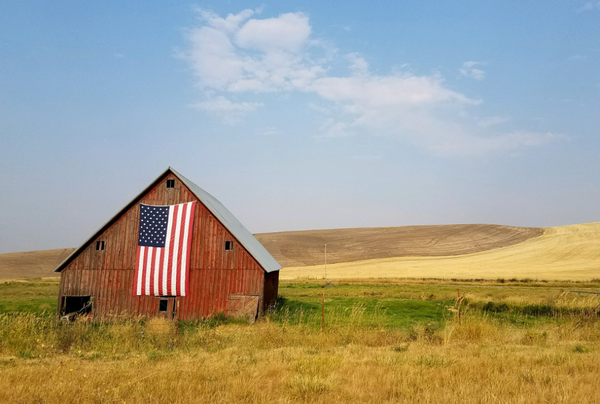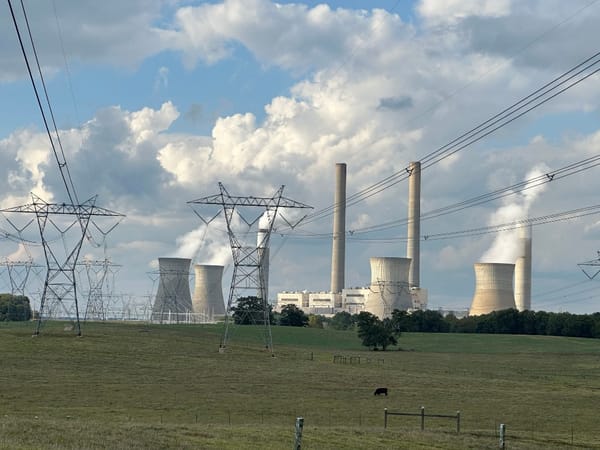Stephane Daeuble: Crossing the Digital Divide with Citizens Broadband Radio Service
CBRS presents an alternative where fiber installation is difficult.
Broadband Breakfast

For many Americans in underserved areas, the pivot to online life during the pandemic put them at a severe disadvantage. Without access to broadband, they had no way to work from home, Zoom with family, participate in online schooling or access telehealth resources. The recent federal infrastructure bill will help tackle this challenge as broadband may soon be accessible to many of the 30 million Americans currently without it. One of the technologies that will help to make this happen is Citizens Broadband Radio Service.
Although we often think of extending broadband in terms of installing optical fiber, there are edge cases where lack of subscriber density or other economic considerations make it difficult to justify the cost of installing any kind of cabling. While most often the case for rural areas, it also affects suburban and dense urban areas. An alternative for the last mile is fixed wireless access, but the mobile spectrum normally used by 4G private wireless (LTE) or 5G can be too expensive for these low-margin use cases. This is why FWA and CBRS turn out to be a perfect marriage.
Enter citizens’ broadband radio service
First launched in 2017, CBRS is the United States’ unique approach to sharing radio spectrum that was being underutilized by the U.S. Navy for coastal radar and military satellite ground stations. Under the sharing scheme, service providers can use the spectrum (3.5-3.7 GHz) to provide other kinds of wireless services. The industry developed a novel scheme to sense when incumbents, such as the U.S. Navy radar, are using the spectrum to ensure that other users of the spectrum are not interfering with them.
Of the various uses, most interest has been in delivering mobile broadband services using either 4G/LTE or 5G. Carriers such as Verizon have purchased CBRS licenses to supplement their existing spectrum, while cable companies such as Comcast will use it to get into the mobile services game.
Additionally, a variety of managed service providers and utilities will use it to provide industrial wireless connectivity for sensor networks, various autonomous technologies and other Industry 4.0 applications.
All of the above are linked to CBRS Priority Access License, that were auctioned for regional licenses like traditional spectrum. There is also a spectrum available for general authorized access in those bands not allocated to incumbent users and not interfering with priority, licensed users, that is open for any enterprises to use in a determined area, after registration.
Crossing the divide
Beyond the big players, small market independent operators, often rural service providers and Wireless Internet Service Providers, emerged during the CBRS spectrum PAL auctions and were interested in CBRS FWA to extend their last mile of coverage. Both LTE and 5G have FWA specifications that can be used with CBRS spectrum – CBRS PAL or CBRS GAA. CBRS has higher capacity than the frequencies typically used for mobile radio coverage in rural areas, such as the 600 and 700 MHz bands, although it requires higher gain antennas to achieve decent coverage over distance.
For rural broadband providers who cannot make the business case for extending their fiber or coax infrastructure to remote subscribers, CBRS FWA looks promising as WISPs will be able to serve many more customers than they can using Wi-Fi, for instance. Early tests presented at the 2019 Fall Technical Forum have shown that it is possible to achieve 25-50 Mbps on the downlink and 3 Mbps on the uplink within 5 miles of the antenna using LTE. Snow and rain have little measurable effect on the signal, but terrain and foliage need to be considered in designing coverage.
One of the advantages of CBRS is that the FWA home customer premise equipment is relatively inexpensive and quick to install. In typical rural applications, it will require a technician to install the CPE 15-25 feet off the ground on the side of the house or a small mast to ensure line of sight. In urban applications, however, the CPE can be installed by the subscriber, positioned out of line of sight when less than 2 miles from the transmitter and next to the window, if further from the radio tower. The simple gateway devices typically provide Wi-Fi coverage within the home.
Rural, suburban and urban
CBRS FWA is also of interest to groups as diverse as rural real estate developments and school boards. Older retirement communities, for instance, can now upgrade their development with broadband services quite inexpensively, without having to install coax or fiber. School boards can reach students to provide them with online teaching and resources. The school simply distributes inexpensive CBRS CPE to its students.

Image courtesy Nokia
One of the Federal Communications Commission’s goals in designing the CBRS sharing scheme was to make wireless broadband more accessible. There was a recognition that innovation, learning and exploration now happen over broadband and that diverse communities in the country were being held back. The pandemic has underscored this need dramatically, and the early indication is that CBRS will play an important role in overcoming this digital divide and enabling a more inclusive society.
Stephane Daeuble is head of enterprise solutions marketing at Nokia. Daeuble’s business acumen and technical understanding comes from his prior roles in several industrial automation, energy, IT, networking and telecom companies with roles spanning a number of different fields like product management, sales development and product marketing. In Nokia, and formerly Motorola, Daeuble sequentially headed 3G/HSPA, LTE and Small Cells global product marketing. This piece is exclusive to Broadband Breakfast.
Broadband Breakfast accepts commentary from informed observers of the broadband scene. Please send pieces to commentary@breakfast.media. The views reflected in Expert Opinion pieces do not necessarily reflect the views of Broadband Breakfast and Breakfast Media LLC.









Member discussion